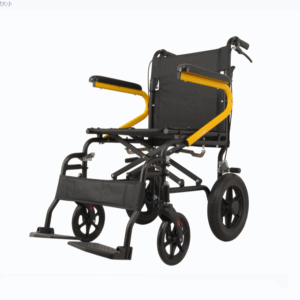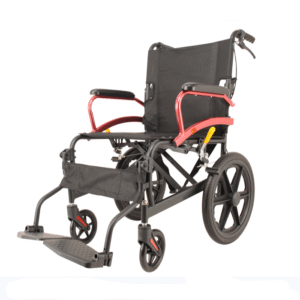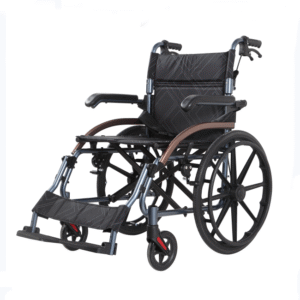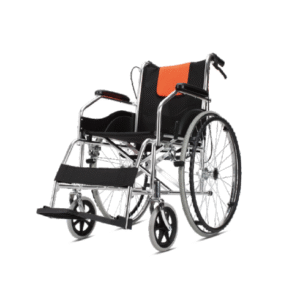Portable Folding Wheelchair: 5 Key Questions Answered—From Folding Ease to Storage Size & Travel Fit
A portable folding wheelchair is designed to blend mobility with convenience, making it a top choice for users who need flexibility—whether for daily errands, travel, or tight living spaces. But with so many models claiming “easy fold” or “compact storage,” it’s hard to know which one delivers. If you’re stuck wondering how quickly it folds, where it will fit, or if it works for air travel, we’ve got the answers. Here are the 5 most critical questions solved to help you choose wisely.
1. How Easy Is It to Fold? Can One Person Do It Alone?
Folding ease is make-or-break for daily use—and the best models prioritize simplicity:
- Folding Mechanism: Look for “one-handed fold” designs. These use a central lever or trigger that, when pulled, collapses the frame in 10–15 seconds. Avoid models that require bending, lifting, or aligning multiple parts—they’re frustrating for solo users.
- Weight Matters: A lightweight frame (25–35 lbs) is easier to handle post-fold. For reference, a 30 lbs wheelchair is manageable for most adults to lift into a car trunk or closet.
- Auto-Lock Feature: Opt for wheelchairs that lock automatically when folded. This prevents it from unfolding unexpectedly during transport—critical for caregivers carrying it up stairs or loading it into a vehicle.
2. What Are the Folded Dimensions? Will It Fit in My Car or Closet?
Storage is a top concern, so precise dimensions matter. The best portable folding wheelchairs shrink to:
- Folded Size: 30x20x12 inches or smaller (length x width x height). To visualize: this is roughly the size of a large suitcase, fitting in most car trunks (even compact cars like a Ford Fiesta) or under a queen-size bed.
- Unfolded vs. Folded: Compare both sizes. For example, a wheelchair that’s 24 inches wide when unfolded (narrow enough for doorways) but folds to 18 inches wide will slide into a closet next to coats or cleaning supplies.
- Pro Tip: Measure your storage spot (e.g., trunk, closet shelf) before buying. Leave 2–3 inches of extra space to avoid struggling with tight fits.
3. Can It Support My Weight? Is It Sturdy Enough for Daily Use?
Smaller size doesn’t mean sacrificing strength—modern designs balance portability and durability:
- Weight Capacity: Most models support 250–300 lbs. For heavier users (300+ lbs), look for “heavy-duty compact” options, which use reinforced steel frames (adding 5–7 lbs to the total weight but maintaining foldability).
- Frame Material: Aircraft-grade aluminum is standard—it resists rust (great for rainy days) and withstands daily folding without bending. Check for welded joints (stronger than bolted ones) at stress points like the seat and wheel axles.
- Daily Use Test: If you’ll use it for 4+ hours daily, prioritize a padded seat (1–2 inches thick) and anti-slip footrests to avoid discomfort or slips.
4. Is It Travel-Friendly? What Do Airlines Say About Folding Wheelchairs?
For travelers, airline compatibility is key. Here’s what you need to know:
- Carry-On vs. Gate-Check: Folding wheelchairs under 22x14x9 inches (when folded) often qualify as carry-on luggage, fitting in overhead bins. Larger models (up to 30x20x12 inches) must be gate-checked, but airlines won’t charge extra fees for mobility equipment.
- Advance Notice: Most airlines recommend notifying them 48 hours in advance, but it’s rarely required. This helps staff assist with pre-boarding or storing the wheelchair safely in the cargo hold.
- International Travel: EU and Asian airlines follow similar rules, but check specific carriers (e.g., Emirates, Air France) for minor differences in size limits.
5. How Do I Maintain It to Keep Folding Smoothly?
A little care keeps the folding mechanism working like new:
- Lubricate Joints: Every 2–3 months, apply silicone spray to hinges and locks to prevent squeaking or sticking—especially if you fold/unfold it daily.
- Clean Regularly: Wipe the frame with a damp cloth to remove dirt, sand, or food crumbs (which can jam the folding lever). Avoid harsh cleaners that damage aluminum.
- Check for Wear: Inspect the folding latch monthly. If it feels loose, tighten the screws with a small wrench—this prevents unexpected unfolding.
Final Thoughts
A portable folding wheelchair should make life easier, not more complicated. By focusing on folding ease, storage size, weight capacity, travel compatibility, and maintenance, you’ll find a model that fits seamlessly into your daily routine—whether you’re running errands, traveling cross-country, or simply navigating a small home.
Thank you for reading this, dear, if you have any suggestions about our website or want to know about wheelchair, please contact us. We will respond quickly.



